
 Home Home |
 Research Research |
 Publications Publications |
 Members Members |
 Courses Courses |
 Gallery Gallery |
 Contact Contact |
| Full List of Publications |
|
| Via ResearchID | |
| Via Google Scholar | |
| Via ORCID | |
| Highlighted Publications | |
| Informing City-Scale Air Pollution Episodes Using Hourly Time-Scale Measurements of PM2.5 Molecular and Elemental Tracers at an Air Quality Research Supersite in Hong Kong Shan Wang, Qiongqiong Wang, Hanzhe Chen, Yuk Ying Cheng, Zijing Zhang, Jinjian Li, Kezheng Liao, Xin Feng, Penggang Zheng, Zhe Wang, Dasa Gu, and Jian Zhen Yu ACS ES&T Air, 2025, 2, 9, 1962-1971. Link>> |
|
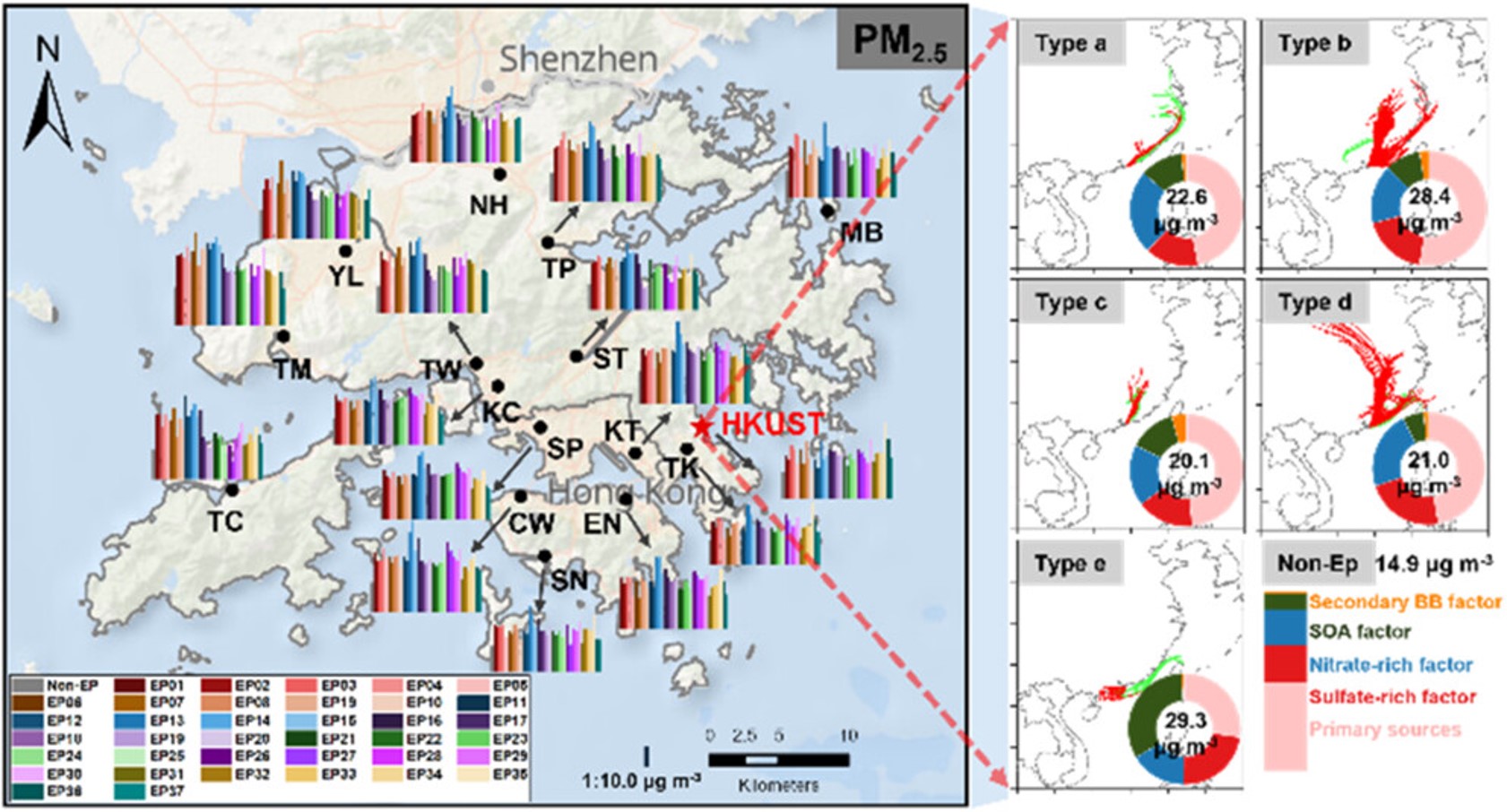 |
|
| Accurate Quantification of Multifunctional C2–3
Organosulfates in Atmospheric Aerosols Using Liquid
Chromatography-Electrospray Ionization Mass Spectrometry: Overcoming
Matrix Effects and Underestimation Shumin Liang, Yuchen Wang, Hanzhe Chen, Wan Chan, and Jian Zhen Yu Environmental Science & Technology, 2025, 59, 25, 12812-12821. Link>> |
|
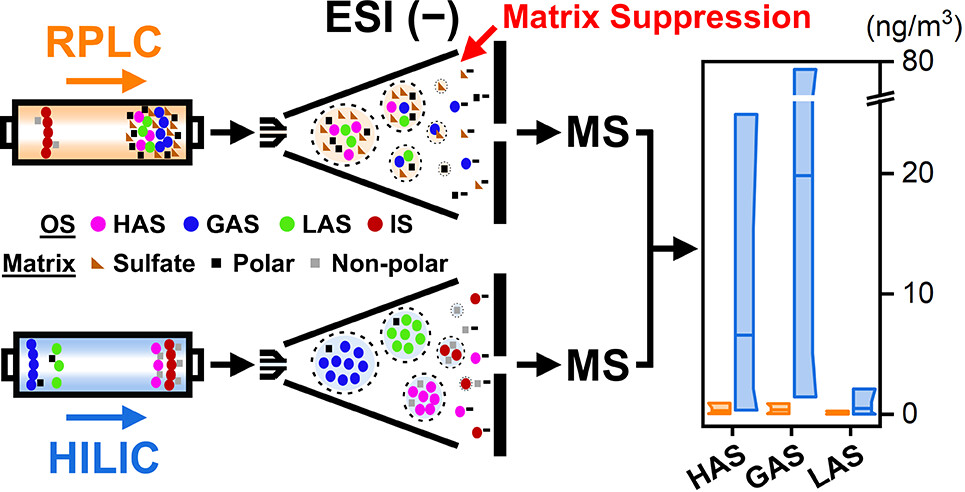 |
|
| Ambient Measurements of Daytime Decay Rates of Levoglucosan, Mannosan, and Galactosan Qiongqiong Wang, Shan Wang, Hanzhe Chen, Zijing Zhang, Huan Yu, Man Nin Chan, and Jian Zhen Yu Journal of Geophysical Research - Atmosphere, 2025, 130, 8, e2024JD042423. Link>> |
|
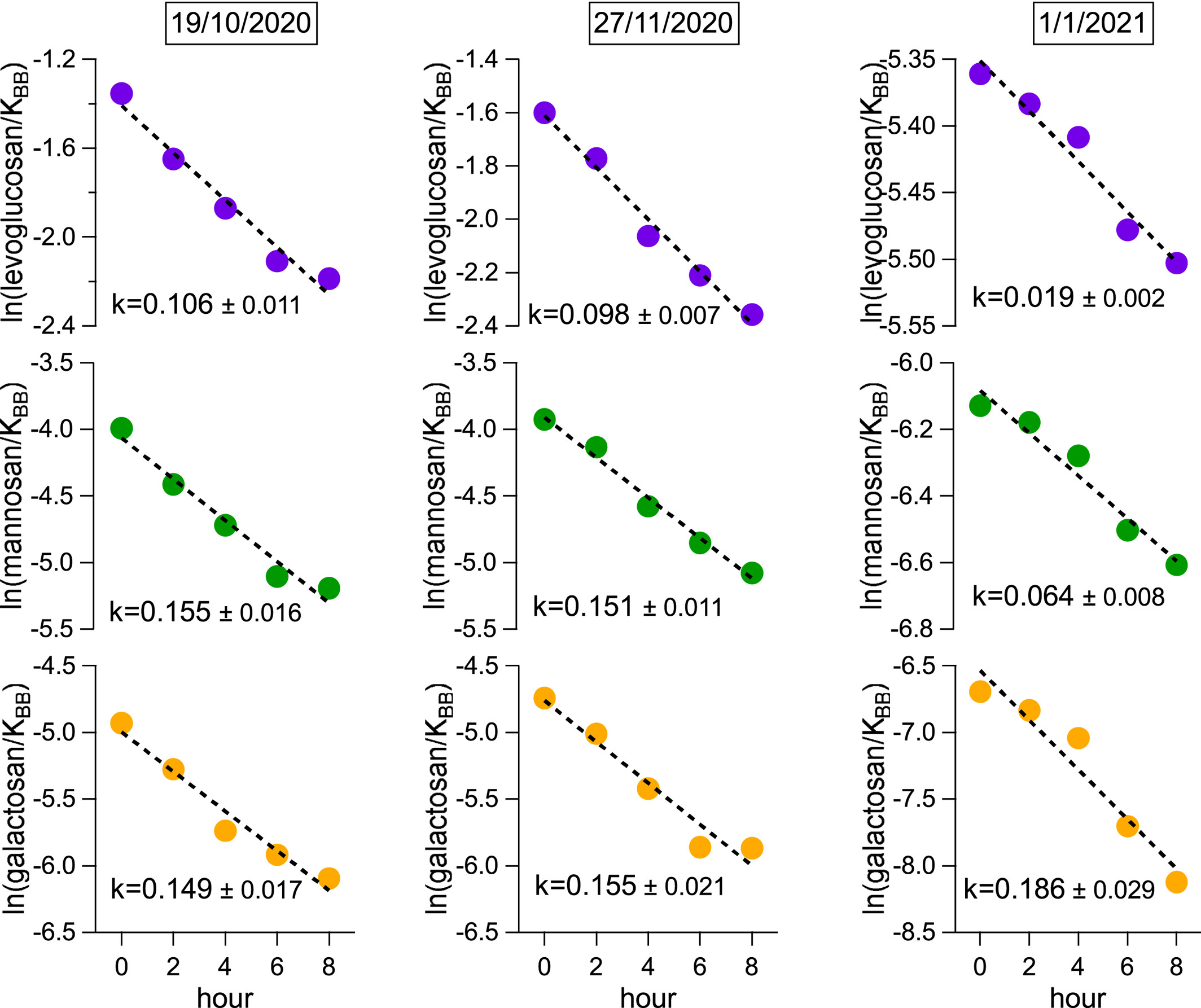 |
|
| Nitrogen Dominates Global Atmospheric Organic Aerosol Absorption Yumin Li, Tsung-May Fu, Jian Zhen Yu, Aoxing Zhang, Xu Yu, Jianhuai Ye, Lei Zhu, Huizhong Shen, Chen Wang, Xin Yang, Shu Tao, Qi Chen, Ying Li, Lei Li, Huizheng Che, Colette L. Heald Science, 2025, 387, 6737, 989-995. Link1>> Link2>> |
|
 |
|
| An
Online Instrument for Assessing Oxidative Potential of Ambient
Particulate Matter via Dithiothreitol Assay, using Particle-Into-LIquid
Sampler (PILS) coupled with Improved Light Absorption Measurement Hanzhe Chen and Jian Zhen Yu Atmospheric Environment, 2025, 343, 120980. Link>> |
|
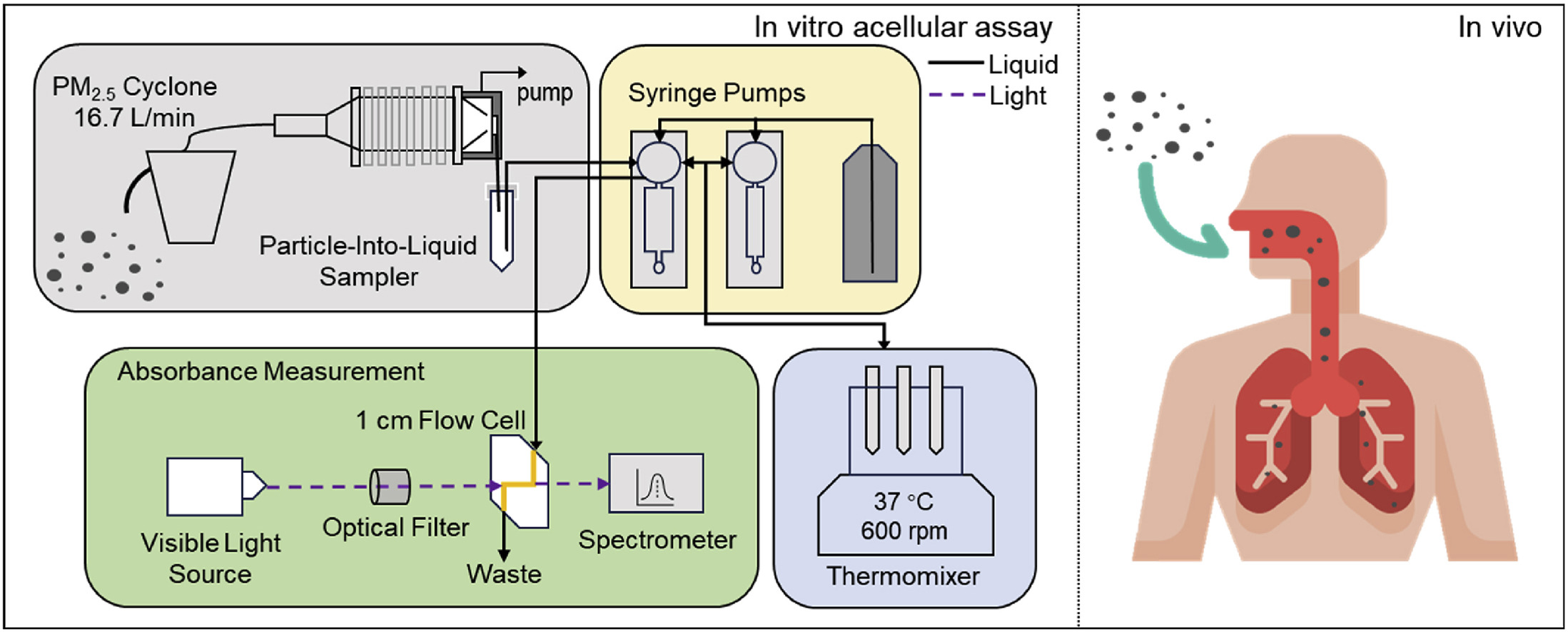 |
|
| New Analytical Paradigm to Determine Concentration of Brown Carbon and Its Sample-by-Sample Mass Absorption Efficiency Kezheng Liao, Yuk Ying Cheng, Sui Shing Yea, L. -W. Antony Chen, John H. Seinfeld, and Jian Zhen Yu Environmental Science & Technology, 2024, 58, 39, 17386-17395. Link>> |
|
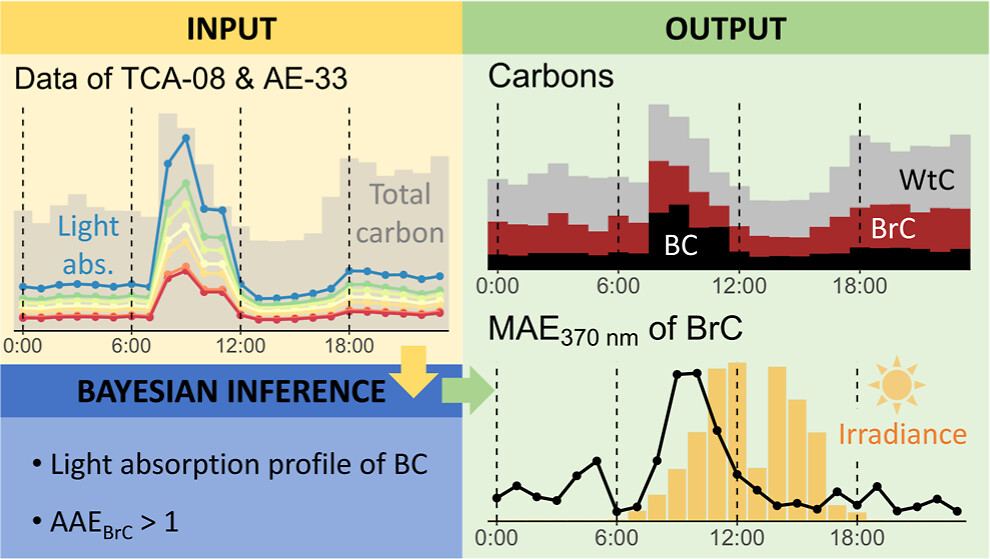 |
|
| Tracking
Source Variations of Inhalation Cancer Risks in Hong Kong, China over
Two Decades (2000–2020) Using Toxic Air Pollutant Monitoring Data Yee Ka Wong, Wai Wai Chan, Dasa Gu, Jian Zhen Yu, and Alexis K. H. Lau Environment & Health, 2024, 2, 6, 411-421. Link>> |
|
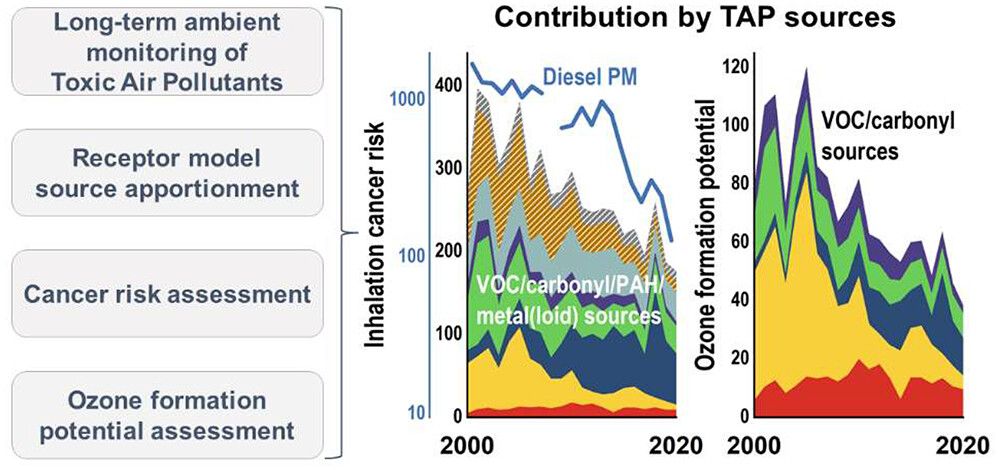 |
|
| New Measurements Reveal a Large Contribution of Nitrogenous Molecules to Ambient Organic Aerosol Xu Yu, Qianfeng Li, Kezheng Liao, Yumin Li, Xinming Wang, Yang Zhou, Yongmei Liang, and Jian Zhen Yu npj Climate and Atmospheric Science, 2024, 7, 72. Link1>> Link 2>> |
|
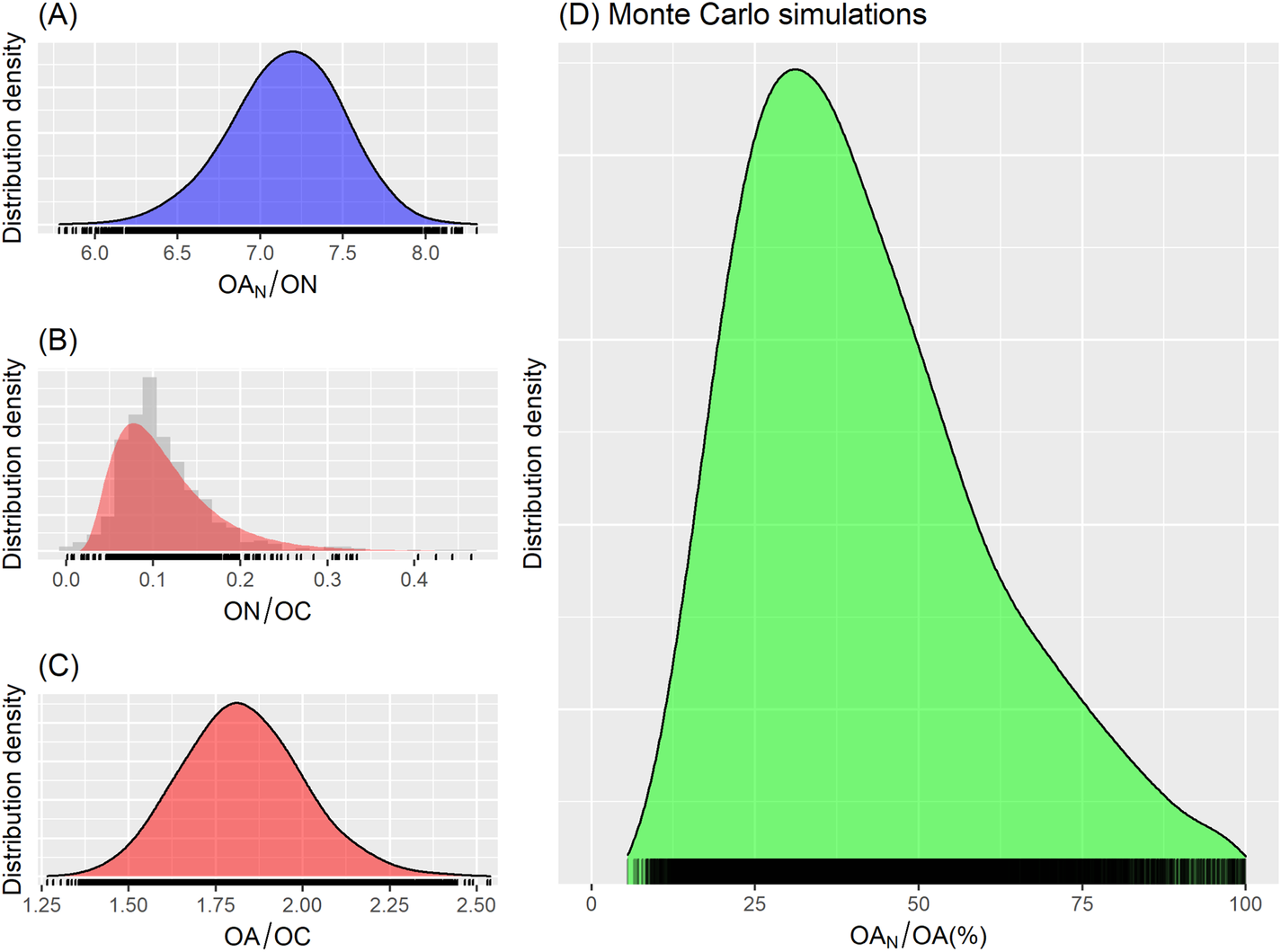 |
|
| Unambiguous
Analysis and Systematic Mapping of Oxygenated Aromatic Compounds in
Atmospheric Aerosols Using Ultrahigh-Resolution Mass Spectrometry Xiao He, X. H. Hilda Huang, Yingge Ma, Cheng Huang, and Jian Zhen Yu Analytical Chemistry, 2024, 96, 5, 1880-1889. Link>> |
|
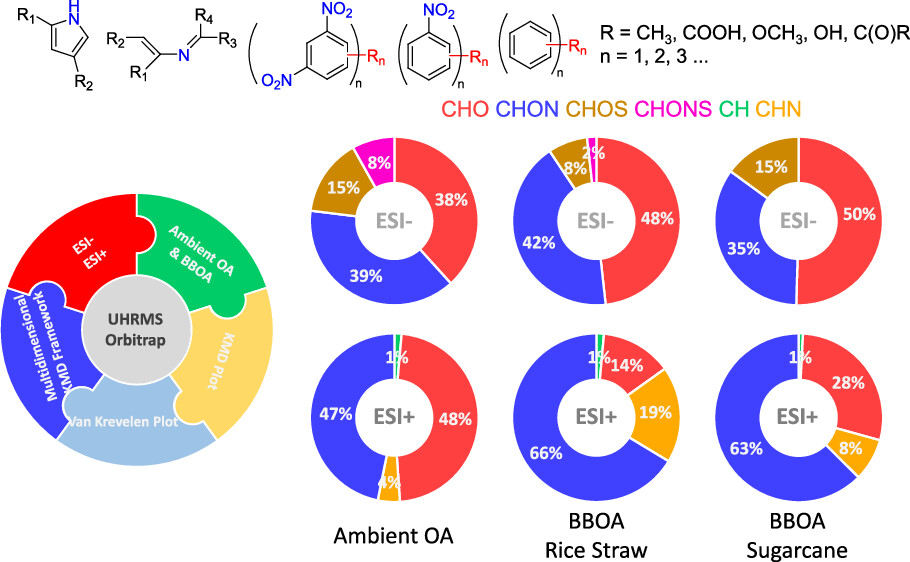 |
|
| Concurrent
Measurements of Nitrate at Urban and Suburban Sites Identify Local
Nitrate Formation as a Driver for Urban Episodic PM2.5 Pollution Jinjian Li, Simon C.H. Ho, Stephen M. Griffith, Yeqi Huang, Rico K.Y. Cheung, Mattias Hallquist, Åsa M. Hallquist, Peter K.K. Louie, Jimmy C.H. Fung, Alexis K.H. Lau, and Jian Zhen Yu Science of the Total Environment, 2023, 897, 165351. Link>> |
|
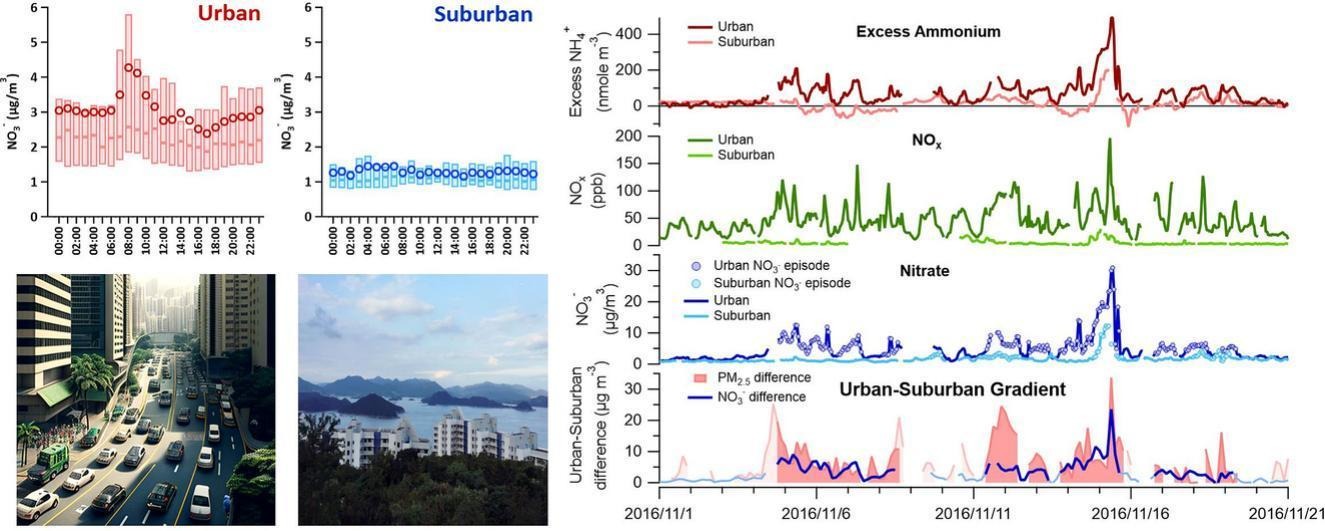 |
|
| Bayesian
Inference Approach to Quantify Primary and Secondary Organic Carbon in
Fine Particulate Matter Using Major Species Measurements Kezheng Liao, Qiongqiong Wang, Shan Wang, and Jian Zhen Yu Environmental Science & Technology, 2023, 57, 13, 5169-5179. Link>> |
|
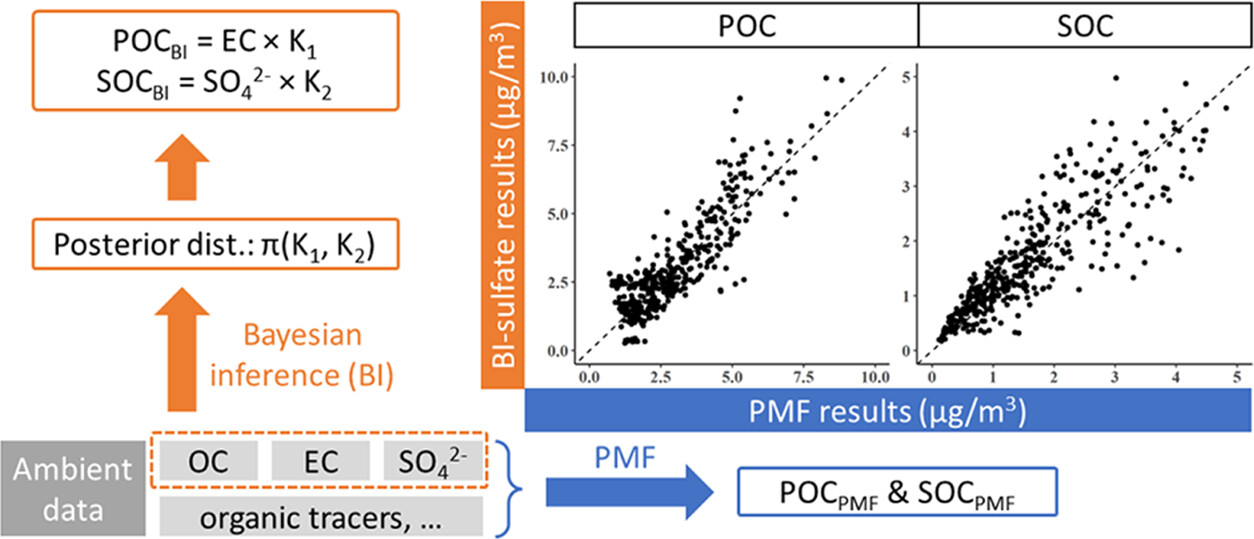 |
|
| Large Presence of Bromine and Toxic Metals in Ambient Fine Particles from Urban Fires Tao Li, Hanzhe Chen, Jimmy C. H. Fung, Damgy H. L. Chan, Alfred L. C. Yu, Kenneth K. M. Leung, and Jian Zhen Yu Atmospheric Environment, 2023, 295, 119554. Link>> |
|
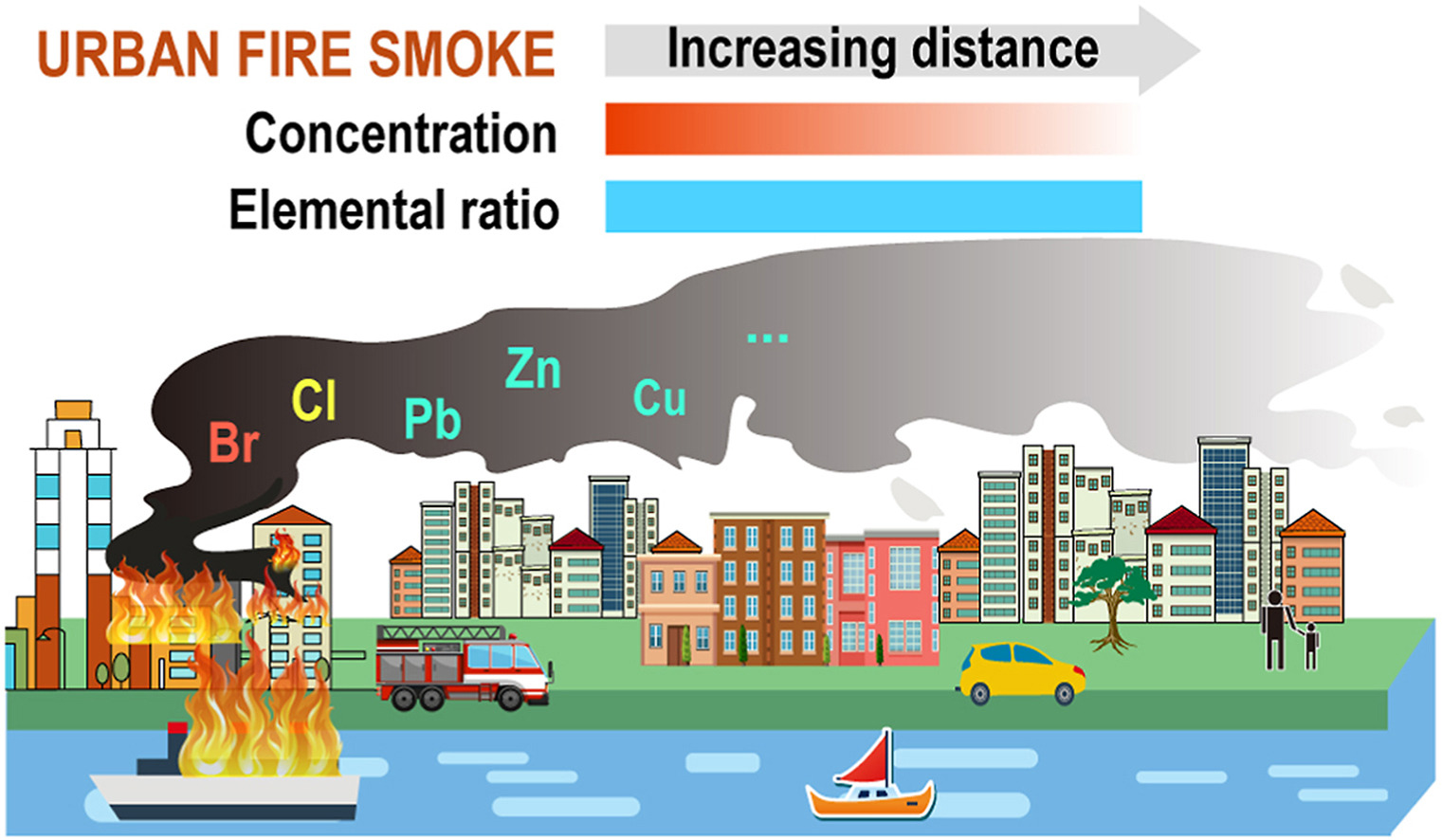 |
|
| Measurement Report: Ten-year Trend of PM2.5 Major Components and Source Tracers from 2008 to 2017 in an Urban Site of Hong Kong, China Wing Sze Chow, Kezheng Liao, X. H. Hilda Huang, Ka Fung Leung, Alexis K. H. Lau, and Jian Zhen Yu Atmospheric Chemistry & Physics, 2022, 22, 11557-11577. Link>> |
|
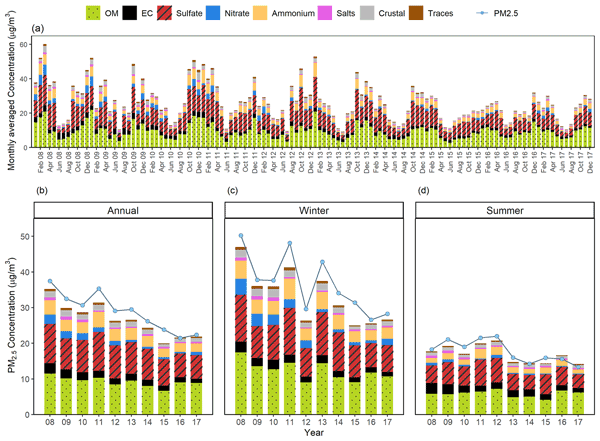 |
This research provides a comprehensive 10-year analysis (2008–2017) of PM2.5
chemical composition and source tracers in Hong Kong, offering critical
insights into the effectiveness of air quality control measures. It
highlights the significant reductions in PM2.5 components
due to targeted policies, such as vehicular emission controls (hopanes:
−75%, EC: −60%) and shipping regulations (~35% reduction in vanadium
and nickel). The study underscores the need to address persistent
sources like biomass burning and regional industrial emissions, which
showed slower progress after 2015. Additionally, it emphasizes the role
of meteorology (e.g., La Niña events) in influencing pollutant levels,
guiding future policy and research. |
| Hourly Organic Tracers-based Source Apportionment of PM2.5
before and during the Covid-19 Lockdown in Suburban Shanghai, China:
Insights into Regional Transport Influences and Response to Urban
Emission Reductions Shan Wang, Qiongqiong Wang, Shuhui Zhu, Min Zhou, Liping Qiao, Dandan Huang, Yingge Ma, Yiqun Lu, Cheng Huang, Qingyan Fu, Yusen Duan, and Jian Zhen Yu Atmospheric Environment, 2022, 289, 119308. Link>> |
|
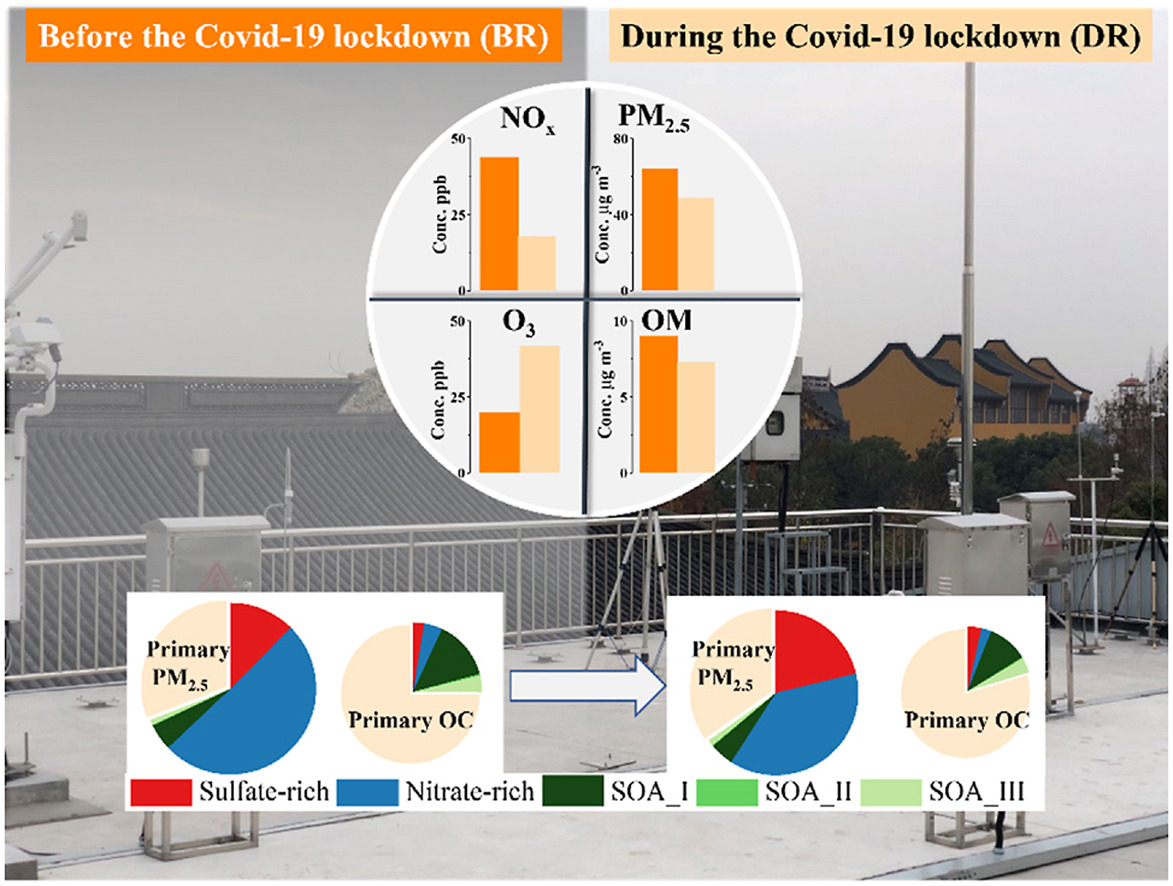 |
|
| Online Measurement of Aerosol Inorganic and Organic Nitrogen based on Thermal Evolution and Chemiluminescent Detection Jinjian Li, Xu Yu, Qianfeng Li, Shan Wang, Yuk Ying Cheng, and Jian Zhen Yu Atmospheric Environment, 2022, 271, 118905. Link>> |
|
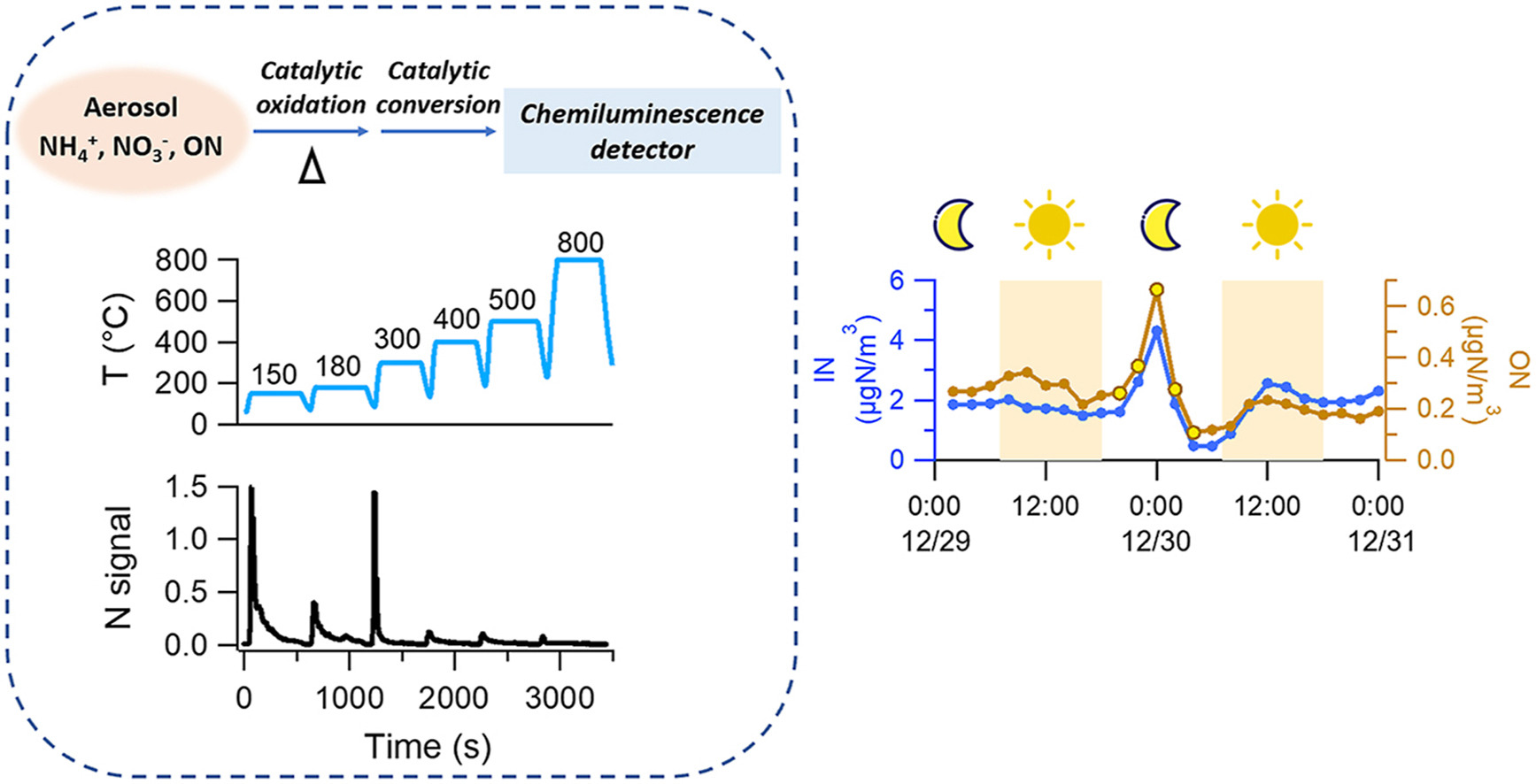 |
|
| Ambient
Measurements of Heterogeneous Ozone Oxidation Rates of Oleic, Elaidic,
and Linoleic Acid Using a Relative Rate Constant Approach in an Urban
Environment Qiongqiong Wang and Jian Zhen Yu Geophysical Research Letters, 2021, 48, e2021GL095130. Link>> |
|
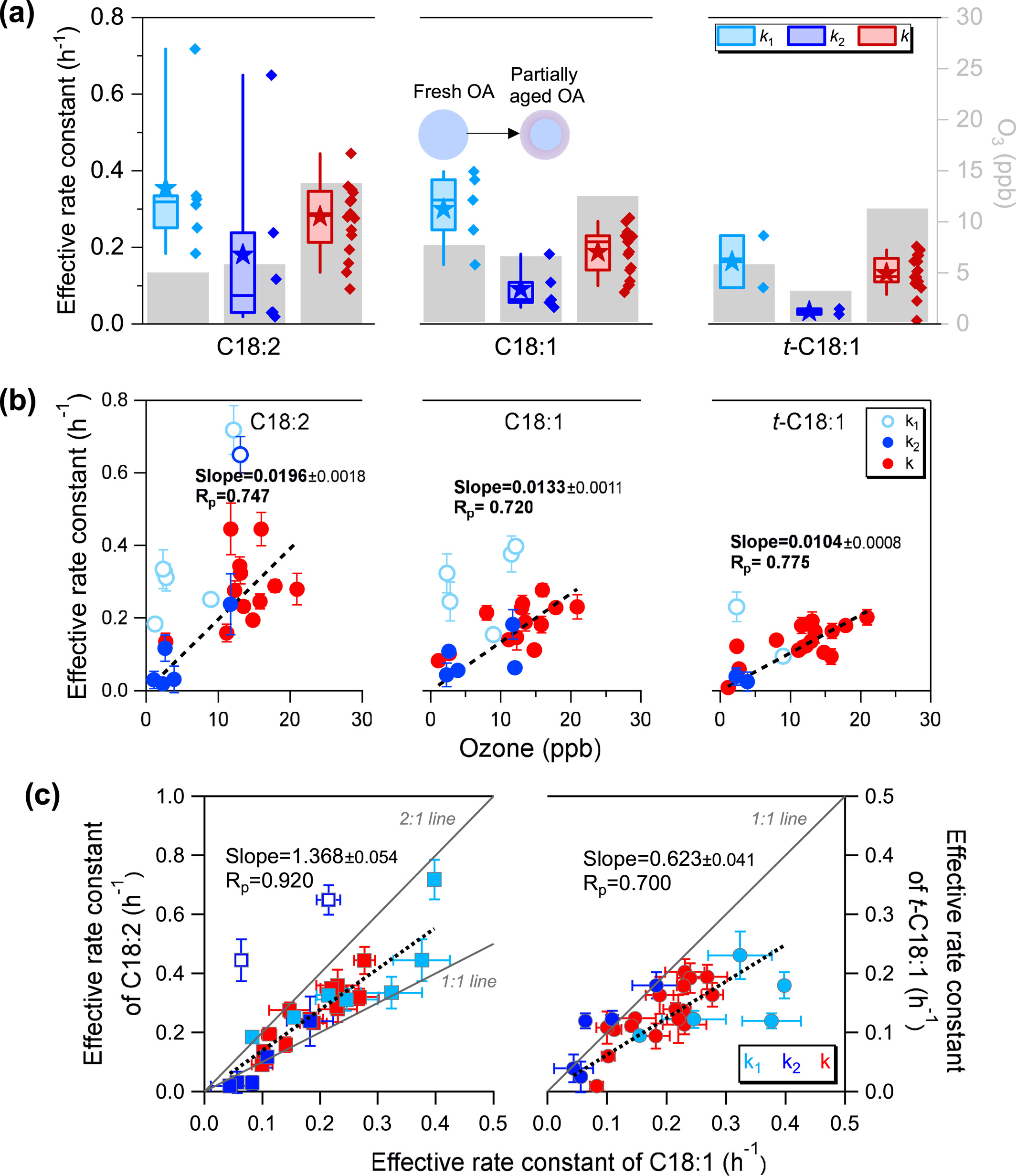 |
|
| Simultaneous Determination of Aerosol Inorganic and Organic Nitrogen by Thermal Evolution and Chemiluminescence Detection Xu Yu, Qianfeng Li, Yao Ge, Yumin Li, Kezheng Liao, X. H. Hilda Huang, Jinjian Li, and Jian Zhen Yu Environmental Science & Technology, 2021, 55, 11579-11589. Link>> | |
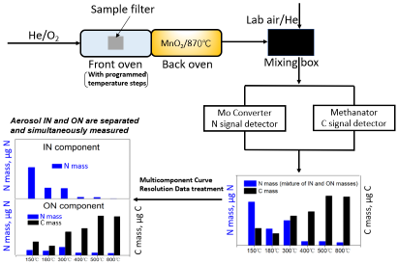 |
|
| Chemical Synthesis of Muultifunctional Air Pollutants: Terpene-Derived Nitrooxy Organosulfates Yuchen Wang, Rongbiao Tong, and Jian Zhen Yu Environmental Science & Technology, 2021, 55, 8573-8582. Link>> | |
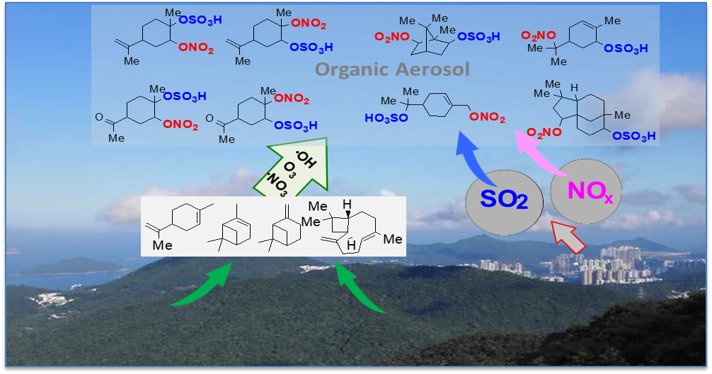 |
We
succeed in first synthesis of terpene-derived nitrooxy organosulfates,
providing indispensable standards to study multifunctional air
pollutants formed between anthropogenic pollution and natural
emissions. The availability of the authentic standards allows us to
clarify previous misidentification and reveals the compound-specific
propensity of carbon skeleton rearrangements for terpene-derived
nitrooxy organosulfates during atmospheric oxidation.
Environmental Advances online platform: https://mp.weixin.qq.com/s/tL3DsDM_cnKDyKS7rXKEfg |
| Tracer-based Chracterization of Source Variations of PM2.5 and Organic Carbon in Shanghai Influenced by the COVID-19 Lockdown Shuhui Zhu, Qiongqiong Wang, Liping Qiao, Min Zhou, Shan Wang, Shengrong Lou, Dandan Huang, Qian Wang, Shengao Jing, Hongli Wang, Changhong Chen, Cheng Huang, and Jian Zhen Yu Faraday Discussions, 2021, 226, 112-137. Link>> |
|
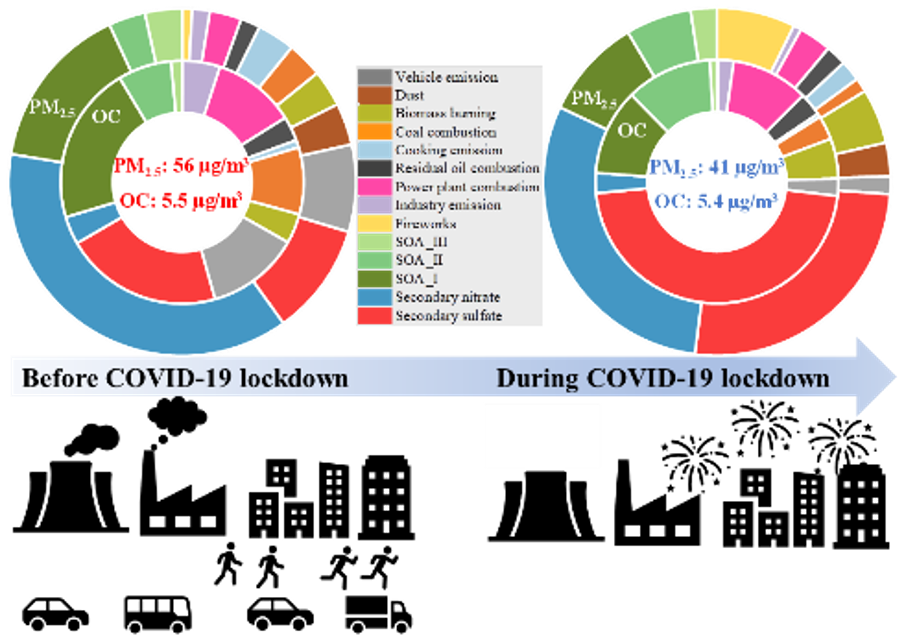 |
The
lockdown in the middle of COVID-19 outbreak brought about steep
reductions in pollution activities. We seized this unique opportunity
to study air pollution chemistry. Our comprehensive measurements of PM2.5
chemical composition has revealed the nonlinear response of secondary
pollutants to reductions in broad primary precursor pollutants. This
work provides quantitative data and insights for future development of
control strategies in megacities.)
|
| Hourly
Measurements of Organic Molecular Markers in Urban Shanghai, China:
Primary Organic Aerosol Source Identification and Observation of
Cooking Aerosol Aging Qiongqiong Wang, Xiao He, Min Zhou, Dan Dan Huang, Liping Qiao, Shuhui Zhu, Ying-ge Ma, Hong-li Wang, Li Li, Cheng Huang, X. H. Hilda Huang, Wen Xu, Douglas Worsnop, Allen H. Goldstein, Hai Guo, and Jian Zhen Yu ACS Earth & Space Chemistry, 2020, 4, 1670-1685. Link>> |
|
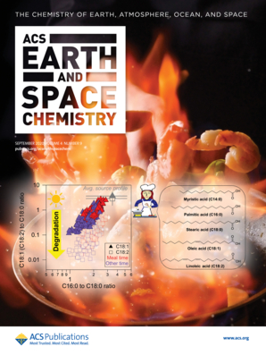 |
We
deployed a thermal desorption aerosol gas chromatography-mass
spectrometry (TAG) system at an urban location in Shanghai for three
weeks in Nov 2018. We have the utility of high time-resolution organic
markers in capturing the dynamic change of source emissions and
atmospheric aging, providing observational evidence to support their
use in source apportionment. |
| Hourly
Measurements of Organic Molecular Markers in Urban Shanghai, China:
Observation of Enhanced Formation of Secondary Organic Aerosol during
Particulate Matter Episodic Periods Xiao He, Qiongqiong Wang, X. H. Hilda Huang, Dan Dan Huang, Min Zhou, Liping Qiao, Shuhui Zhu, Ying-ge Ma, Hong-li Wang, Li Li, Cheng Huang, Wen Xu, Douglas R. Worsnop, Allen H. Goldstein, and Jian Zhen Yu Atmospheric Environment, 2020, 240, 117807. Link>> |
|
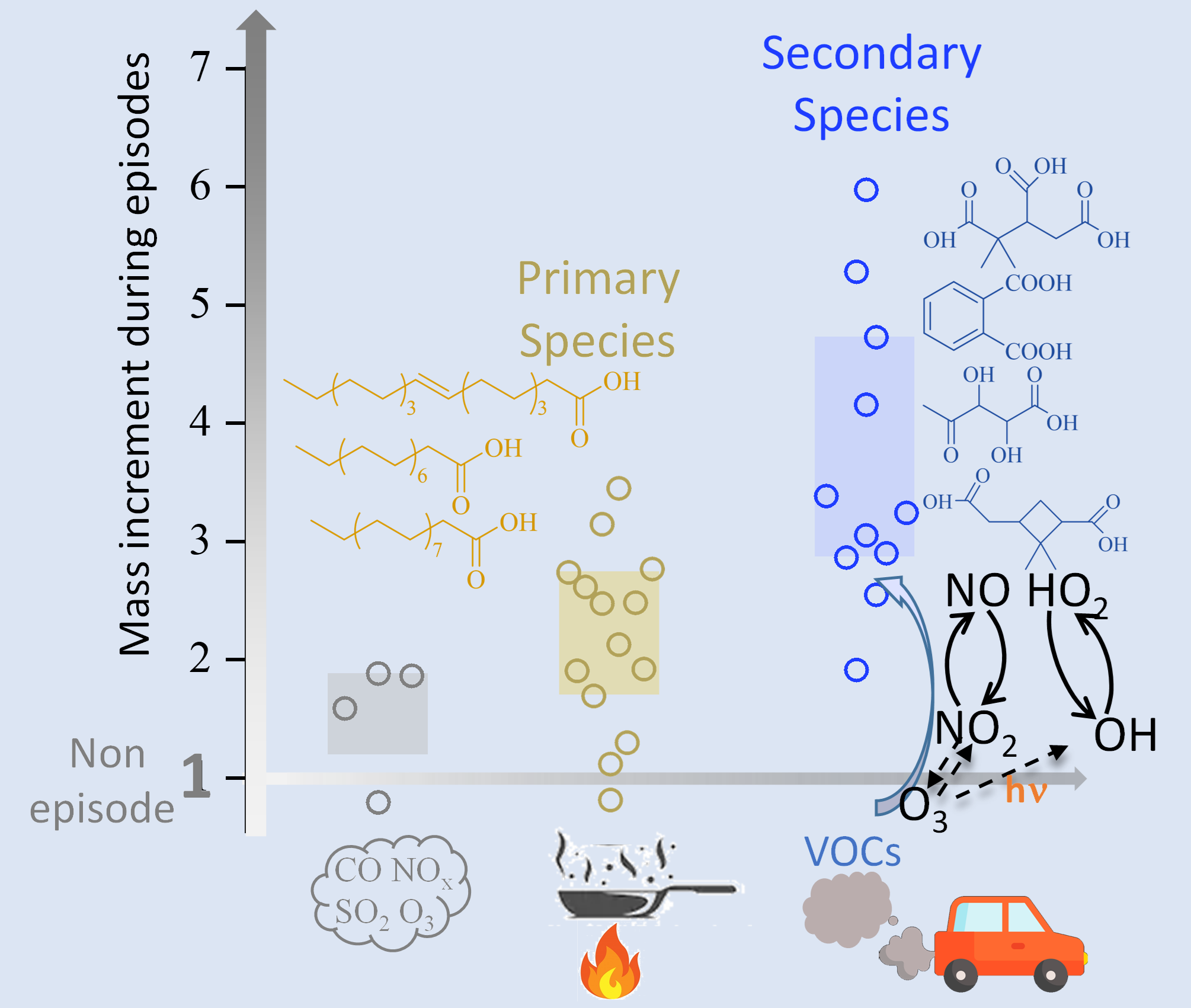 |
|
| Source Apportionment of PM2.5 in Shanghai based on Hourly Organic Molecular Markers and other Source Tracers Rui Li, Qiongqiong Wang, Xiao He, Shuhui Zhu, Kun Zhang, Yusen Duan, Qingyan Fu, Liping Qiao, Yangjun Wang, Li Huang, Li Li, and Jian Zhen Yu Atmospheric Chemistry & Physics, 2020, 20, 12047-12061. Link>> |
|
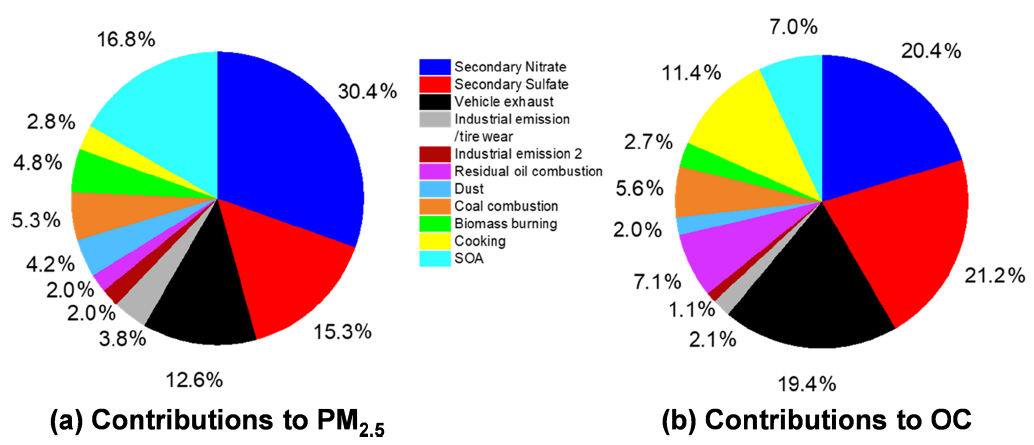 |
A source apportionment study was carried out through utilizing hourly measured PM2.5
and its chemical components, including organic molecular markers. The
PMF receptor modeling has resolved 11 source factors, among which 3
organics-dominated factors, namely an SOA factor, biomass burning, and
cooking factor, were resolved from other sources due to the
availability of the organic marker data.
|
| Tracking Separate Contributions of Diesel and Gasoline Vehicles to Roadside PM2.5 through Online Monitoring of Volatile Organic Compounds and PM2.5 Organic and Elemental Carbon: a 6-year Study in Hong Kong Yee Ka Wong, X. H. Hilda Huang, Peter K. K. Louie, Alfred L. C. Yu, Damgy H. L. Chan, and Jian Zhen Yu Atmospheric Chemistry & Physics, 2020, 20, 9871-9882. Link>> |
|
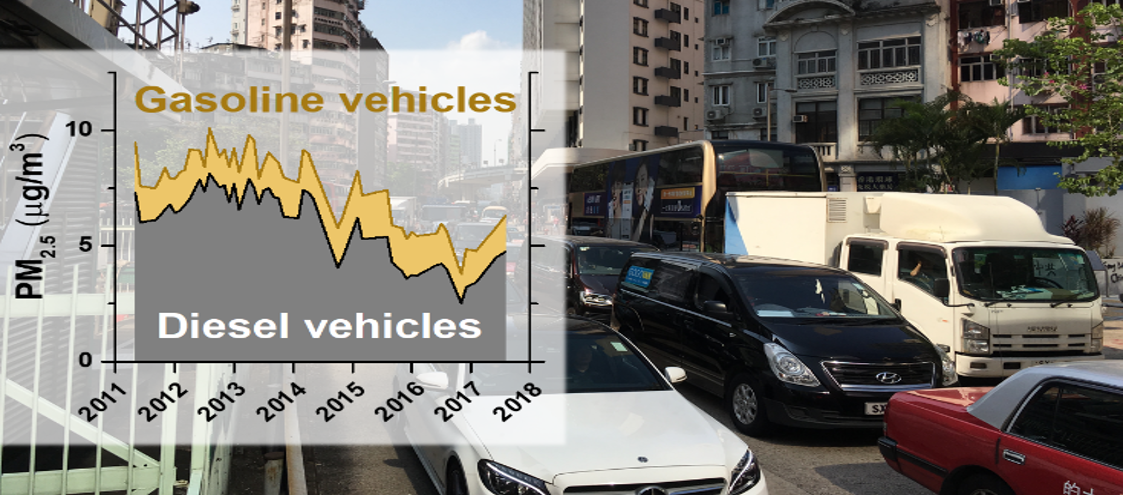 |
Knowledge
of the relative contribution of gasoline versus diesel powered vehicles
to fine particulate matter is highly policy relevant and yet there
lacks an effective observation-based method to determine this quantity,
especially for its robust tracking over a period of years. In this
work, we present an approach to track separate contributions by
gasoline and diesel vehicles through positive matrix factorization
analysis of online monitoring data (VOCs, OC and EC) measurable by
relatively inexpensive analytical instruments. |
| Abundance and Sources of Benzo[a]pyrene and other PAHs in Ambient Air in Hong Kong: A Review of 20-year Measurements (1997-2016) Kezheng Liao and Jian Zhan Yu Chemosphere, 2020, 259, 127518. Link>> |
|
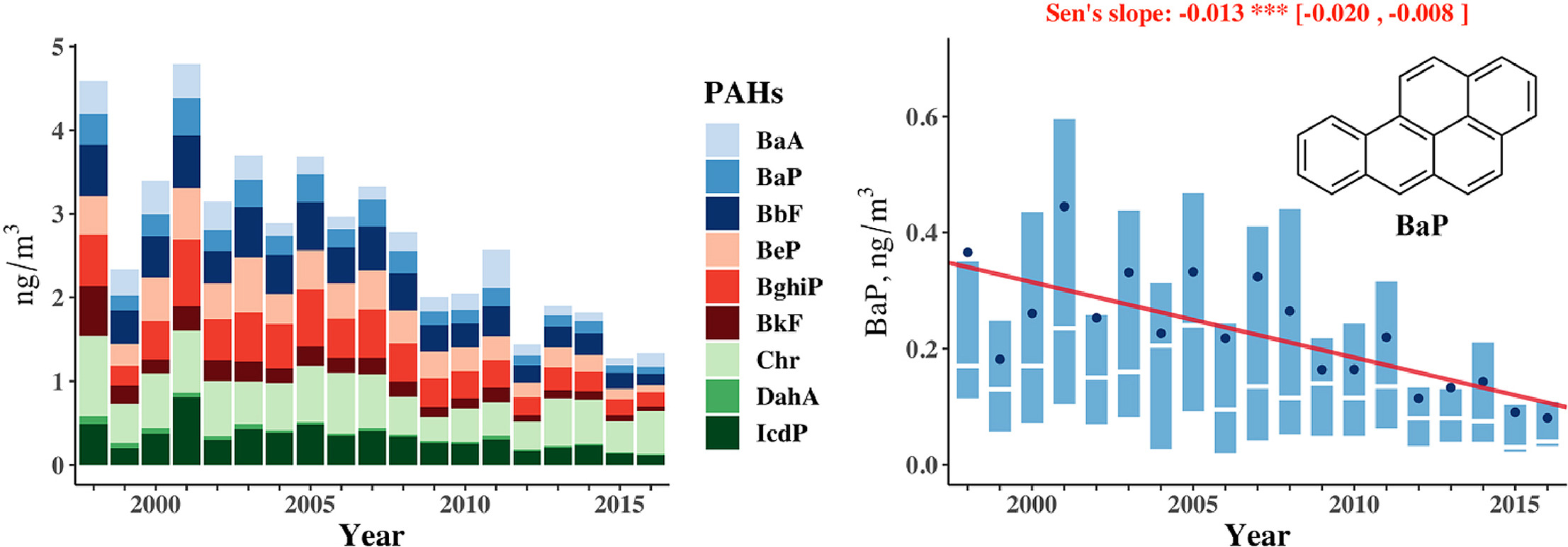 |
|
| Assessment
of Interactions between Transition Metals and Atmospheric Organics:
Ascorbic Acid Depletion and Hydroxyl Radical Formation in Organic-Metal
Mixtures Manfei Lin and Jian Zhen Yu Environmental Science & Technology, 2020, 54, 1431-1442. Link>> |
|
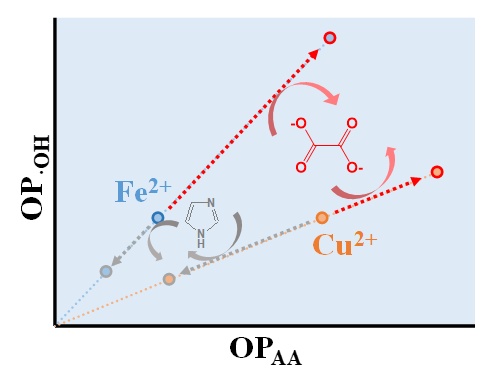 |
Transition
metals and certain atmospheric organics are recognized to be redox
active and responsible for inducing ROS in human cells. We report here
the mixture effects of metals and organics on the measured OP in the
presence of ascorbic acid (AA). This work reveals that carboxylic acids
enhanced the OPAA and OP•OH by Cu2+ (or Fe2+)
while imidazoles suppressed them. While ambient HULIS showed negligible
impacts, two biomass burning source HULIS samples from rice straw and
sugarcane leaf burning displayed unambiguous suppression or enhancement
effect on OPAA and OP•OH by Cu2+ (or Fe2+). The effect was metal-specific and source HULIS-specific.
|
| Efficient Control of Atmospheric Sulfate Production based on Three Formation Regimes Jian Xue, Xin Yu, Zibing Yuan, Stephen M. Griffith, Alexis K. H. Lau, John H. Seinfeld, and Jian Zhen Yu Nature Geoscience, 2019, 12, 977-982. Link>> |
|
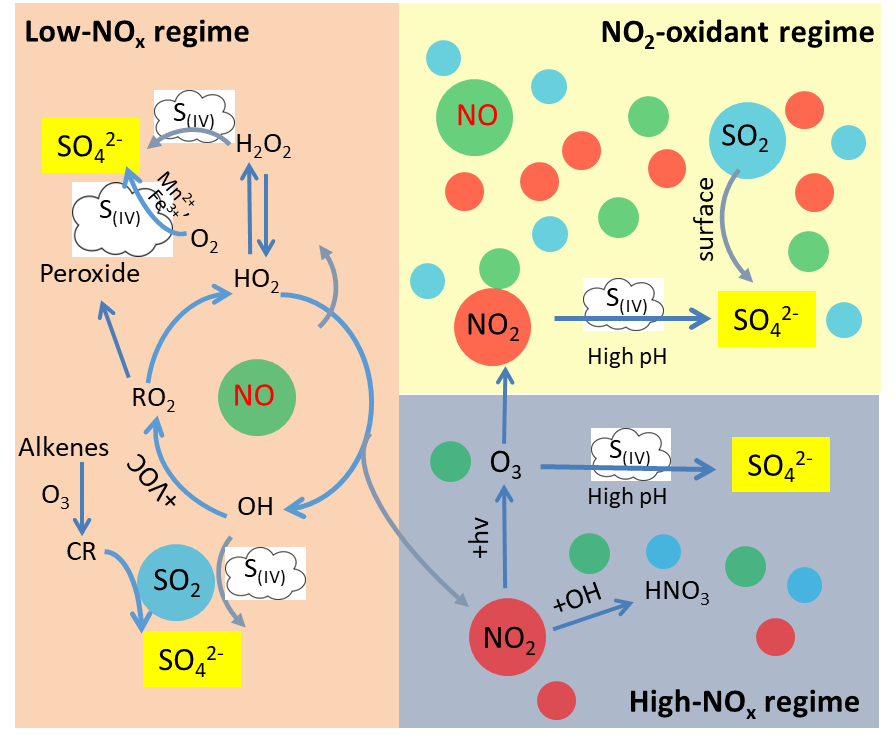 |
While
the reactant-product link between sulfur dioxide and airborne sulfate
formation is common knowledge, the complex oxidants and mechanisms that
enable this transformation are not. This work describes the conceptual
framework to delineate the relationship between sulfate and one set of
its controllable precursors, nitrogen oxides (NOx), laying the groundwork for formulating more effective measures of reducing sulfate.
|
| Source Apportionment of PM2.5
Using Hourly Measurements of Elemental Tracers and Major Constituents
in an Urban Environment: Investigation of Time-Resolution Influence Qiongqiong Wang, Liping Qiao, Min Zhou, Shuhui Zhou, Stephen Griffith, Li Li, and Jian Zhen Yu Journal of Geophysical Research: Atmospheres, 2018, 123, 5284-5300. Link>> |
|
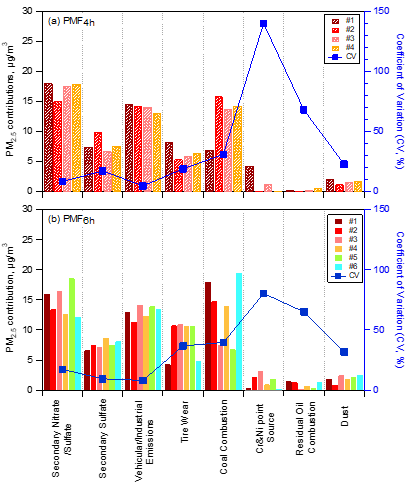 |
Using
actual field data, we unequivocally demonstrated the benefits of
high-time resolution chemical composition data in tracking PM2.5
pollution. The improved robustness is achieved through better capturing
of diurnal scale dynamics in source activities. Findings from this
study provide implementable guidance for effective monitoring strategies
|
| Abundance
and Sources of Phthalic Acids, Benzene-Tricarboxylic Acids, and
Phenolic Acids in PM2.5 at Urban and Suburban Sites in Southern China Xiao He, X. H. Hilda Huang, Ka Shing Chow, Qiongqiong Wang, Ting Zhang, Dui Wu, and Jian Zhen Yu ACS Earth & Space Chemistry, 2018, 2, 147-158. Link>> |
|
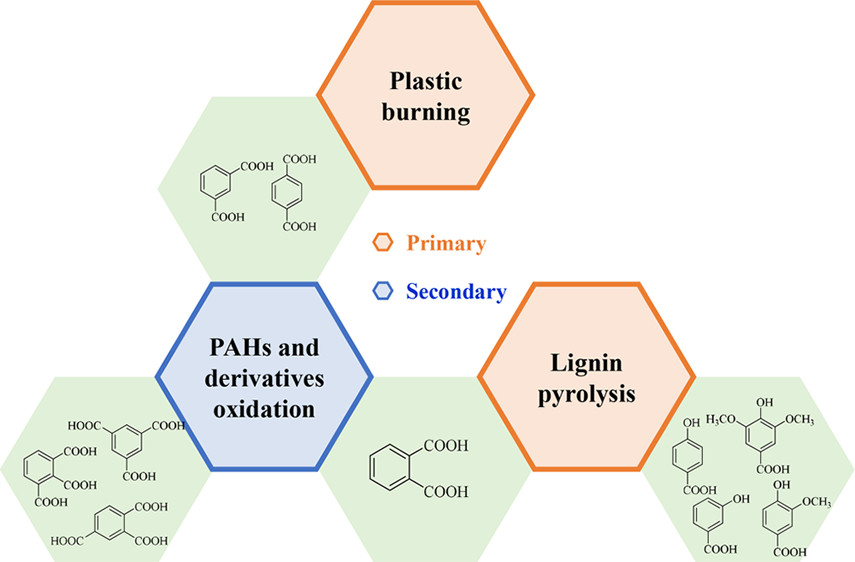 |
|
| Impact
of Secondary Organic Aerosol Tracers on Tracer-Based Source
Apportionment of Organic Carbon and PM2.5: A Case Study in the Pearl
River Delta, China Qiongqiong Wang, Xiao He, X. H. Hilda Huang, Stephen M. Griffith, Yongming Feng, Ting Zhang, Qingyan Zhang, Dui Wu, and Jian Zhen Yu ACS Earth & Space Chemistry, 2017, 1, 562-571. Link>> |
|
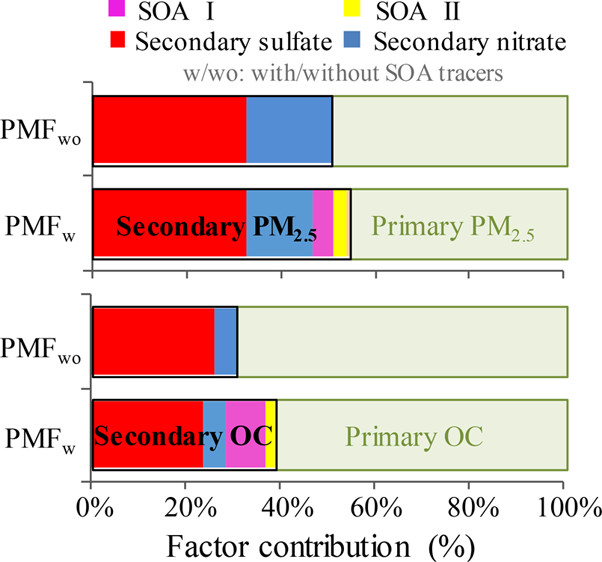 |
|
| Synthesis of Four Monoterpene-Derived Organosulfates and Their Quantification in Atmospheric Aerosol Samples Yuchen Wang, Jingyun Ren, X. H. Hilda Huang, Rongbiao Tong, and Jian Zhen Yu Environmental Science & Technology, 2017, 51, 6791-6801. Link>> |
|
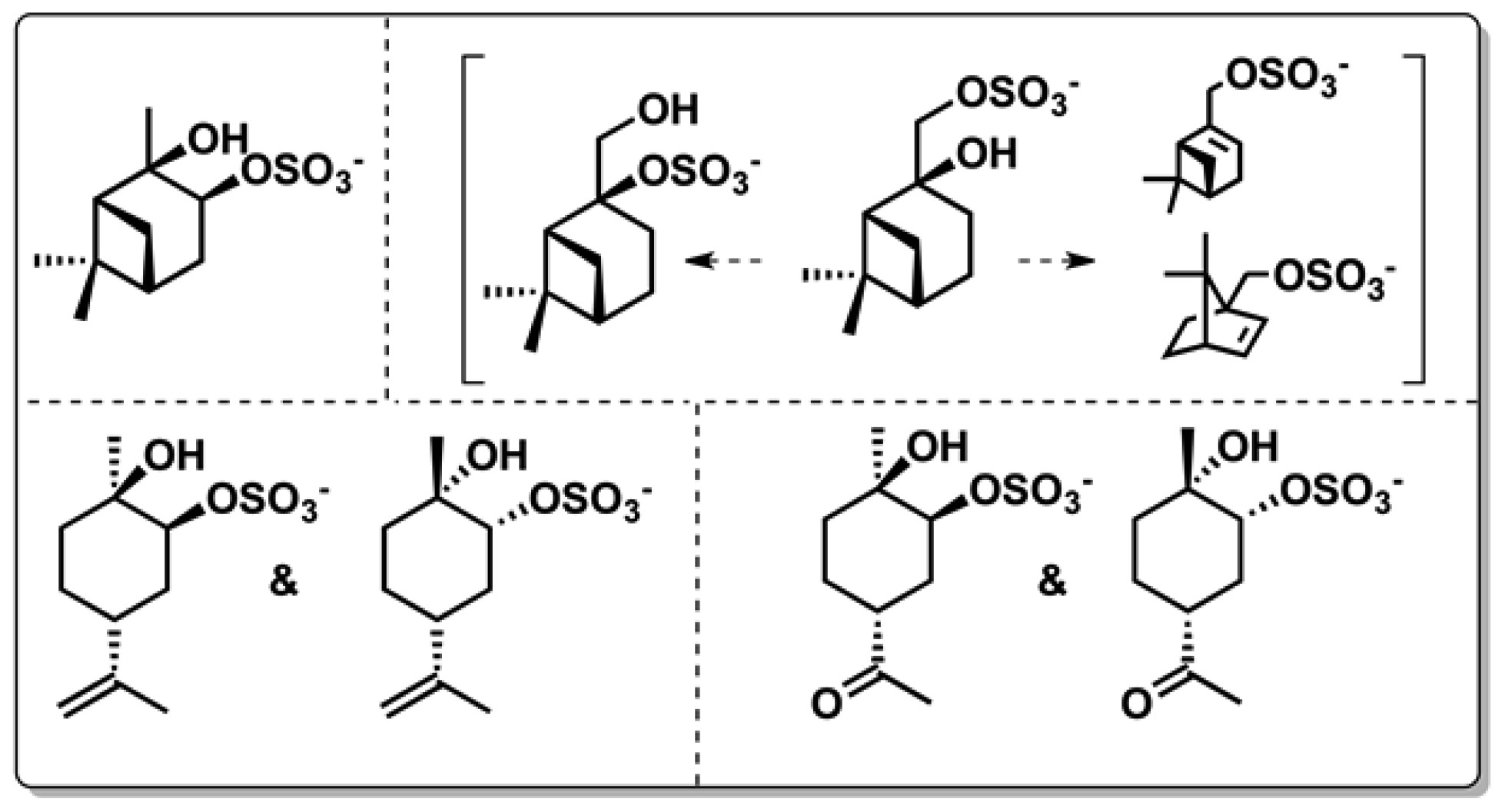 |
|
|
Sulfate Formation Enhanced by a Cocktail of High NOx, SO2, Particulate Matter, and Droplet pH during Haze-Fog Events in Megacities in China: An Observation-Based Modeling Investigation
Jian Xue, Zibing Yuan, Stephen M. Griffith, Xin Yu, Alexis K. H. Lau, and Jian Zhen Yu Environmental Science & Technology, 2016, 50, 7325-7334. Link>> |
|
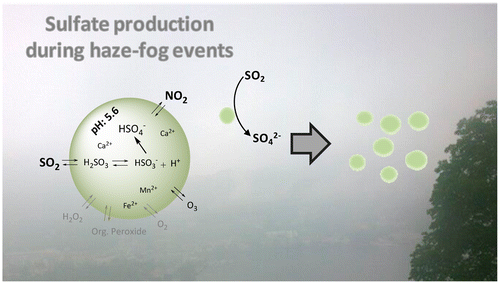 |
|
| Organosulfates
in Humic-like Substance Fraction Isolated from Aerosols at Seven
Locations in East Asia: A Study by Ultra-High-Resolution Mass
Spectrometry Peng Lin, Jian Zhen Yu, Guenter Engling, and Markus Kalberer Environmental Science & Technology, 2012, 46, 13118-13127. Link>> |
|
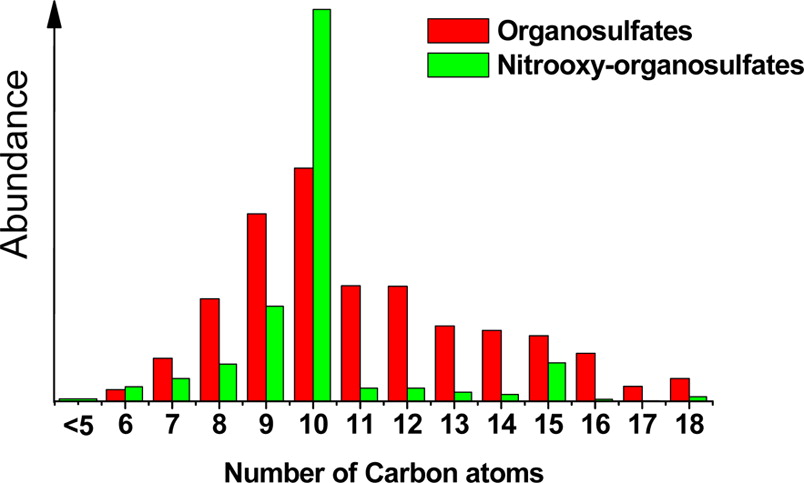 |
|